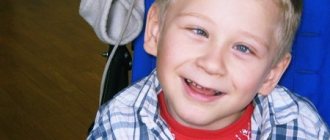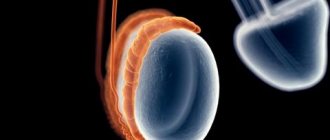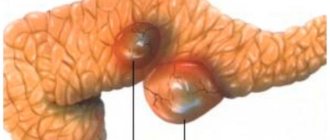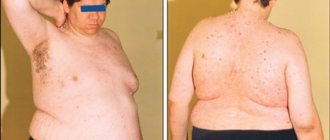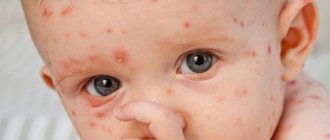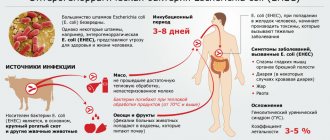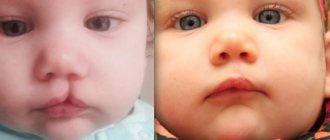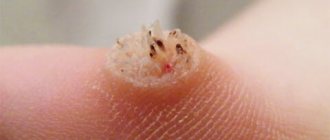Autism is not one disease, but a large complex of neurodevelopmental disorders of various origins, referred to as autism spectrum disorders (ASD) . According to modern data, the frequency of occurrence is 5:1000 (source: Charles Njokiktien "Children's Behavioral Neurology", 2018). It occurs 4 times more often in boys than in girls. The apparent increase in the incidence of ASD (according to old data, the prevalence was 4:10,000) is associated with improved diagnosis and expansion of its criteria. The concept of the spectrum itself appeared relatively recently, in 2013, when the new edition of DSM-5 was adopted; before that, only certain types of autism were considered. According to the International Classification of Diseases, 10th revision (ICD-10), childhood autism (F84.0), atypical autism (F84.1), Rett syndrome (F84.2), Asperger syndrome (F84.5) and several others are currently distinguished forms However, in ICD-11, which has already been adopted in many countries (in our country it will be in force from 2022), “autism spectrum disorder” appears as the main nosological unit, and its forms are distinguished based on existing intellectual and language deficits, for example: “ASD with intellectual development disorder and with mild or absent functional language impairment”, “ASD without intellectual development disorder and with functional language impairment” and others.
ASDs can vary in severity and pathogenetic mechanisms, which greatly influences the clinical presentation, prognosis and social adaptation.
Onset of disease manifestation and classification
This disease occurs in children in two to four cases per hundred thousand people. If we add to this hidden atypical autism, when the underlying disease is accompanied by mental retardation, then this number will immediately increase to twenty. However, autism is four times more common in boys than in girls.
Content:
- Onset of disease manifestation and classification
- Main signs for diagnosing autism
- Clinical manifestations of forms of autism
- Manifestations of autism in newborns
- Symptoms in children of primary and school age
- Signs of autism in adolescence
- Autism in adults
- Signs of the fetus during pregnancy
- The difference between autism and dementia
- The myth about post-vaccination
- Testing a child at home
- Summing up
Autistic disorder can affect anyone at any age, but the clinical signs of the disorder will vary significantly among children, adolescents, and adults.
It is customary to distinguish between: early childhood autism (ECA), which can be detected in children under the age of three, childhood autism, which manifests itself from three to eleven years, and adolescent autism, usually detected in people after the age of eleven.
There are several types of this disease. They have different symptoms and some specific features characteristic of a particular type of disease. According to the international classification of diseases, there are: Kanner syndrome or classic autism, Asperger syndrome, Rett syndrome and atypical autism.
The first signs of childhood autism can be seen as early as a one-year-old child. Although more pronounced symptoms of the disease appear, as a rule, at two and a half to three years. During this period, the child’s isolation, withdrawal into himself and limited interests are most noticeable.
If such a child is not the first in the family, then the mother sees the initial signs of the disease in infancy, since a comparison can be made between this baby and his older brother or sister. Otherwise, it is quite difficult to understand that something is wrong with the child. Usually, this manifests itself at the moment when the autistic child goes to kindergarten, that is, much later.
It happens that the diagnosis of autism is made even after five years of age. These children are characterized by:
- the presence of a higher IQ compared to those patients in whom the disease was diagnosed earlier;
- maintaining communication skills;
- the presence of less severe cognitive disorders;
- distorted perception of the surrounding world;
- behavior that makes one feel isolated from society.
There is almost always a certain period of time between the first signs of autism and the immediate diagnosis. After all, later, when the child has a need to communicate not only with family and friends, other character traits arise that parents previously did not attach any importance to. In other words, the disease does not occur suddenly, it is simply quite difficult to recognize it at the initial stage.
Forecast
The prognosis depends on a lot of factors. The following points play a role:
- Age of development of deviation.
- Form of the pathological process. Its variety. Low-functioning forms have initially poorer prospects for recovery.
- Intelligence level.
- Preservation of speech function, development of verbal skills.
- Correction of autism and its nature. Without treatment, the disease will persist for a long time. In adult patients who have not previously received therapy, the likelihood of recovery is significantly lower. The prognosis is relatively negative.
- Tendency to independence.
- Expanding a person’s sphere of interests after therapy.
- Facilitating social communications.
Practice shows that it is almost never possible to immediately assess prospects. Interim results are summed up after complex treatment has been carried out. According to generalized calculations, the probability of achieving stable remission and full functioning in society is about 25%. That is, no more than a quarter of people manage to achieve conditional restoration of basic functions.
As for secondary forms, when the disorder is part of the syndrome. Most psychotic disorders of the schizophrenia spectrum have a poor prognosis. Autization is a natural part of the so-called defect. It persists constantly and gets worse over time without treatment. Brain diseases are not so obvious in terms of prospects.
Main signs for diagnosing autism
Although the symptoms of the disease vary significantly depending on the type of autism, the age of the child and other factors, there are basic signs of the disease that are common to all autistic people. It should be understood that the presence of one of the symptoms is not enough to make such a diagnosis. In such cases, the so-called triad is used for diagnosis - the three most obvious signs by which the presence of this disease can be determined. Let's look at each of the main features in more detail.
Social relationship
This characteristic is fundamental for children with autism. Autistic people shun the external environment, withdrawing into their own imaginary world. They do not like to communicate and avoid various communications in every possible way.
The mother should be alerted by the fact that the baby does not ask to be held at all, is inactive, reacts weakly to new toys, does not clap his hands, rarely smiles, and does not look into the eyes when communicating with him. Sick children, as a rule, do not respond to their own name and react poorly to sounds and light. When trying to establish communication with them, they get scared or become aggressive. Lack of eye contact is characteristic of more severe forms of autism and this symptom does not appear in all patients. Often such children can look at one point for a long time, as if through a person.
Growing up, the child increasingly withdraws into himself, almost never asks for help, and has little contact with other family members. Many of the sick cannot tolerate hugs or touches.
Speech and its perception
Verbal communication impairments always occur in autism. For some they can be pronounced, for others they can be weak. In this case, both speech delay and complete absence of speech function can be observed.
In early childhood autism this is more obvious. In young children, speech may even be completely absent. In some cases, it’s the other way around: the child begins to speak, and after some time withdraws into himself and becomes silent. It happens that such children are initially ahead of their peers in speech development, and then, from about one and a half years old, a regressive decline occurs, and they stop speaking altogether. However, they often talk to themselves, and sometimes in their sleep.
Also, babies often lack babbling and humming, and rarely use various gestures and facial expressions. Growing up, the child begins to speak tongue-tied and confuses pronouns. When talking about themselves, they usually use third person address: “he wants to eat”, “Andrey wants to eat” and so on.
When around other people, such children are usually silent, not inclined to communicate and may not answer questions. However, when left alone with themselves, they often comment on their actions, talk to themselves and even read poetry.
The speech of such children is characterized by monotony and lack of intonation. It is dominated by quotes, various commands, strange words, and rhymes.
Speech delay is a common reason why parents turn to a speech therapist or speech pathologist. A specialist can determine what exactly caused the speech dysfunction. In autism, this is due to a reluctance to communicate, communicate with anyone, and deny interactions with the outside world. Delayed speech development in such cases indicates serious disorders in the social sphere.
Limited interests
Autistic children most often show interest in one toy and this interest persists for many years. The games of such children are monotonous, or they do not play at all. You can often see a child spending hours watching the movement of a sunbeam or watching the same cartoon several times. They can be so absorbed in one activity that they create the impression of complete detachment from the outside world, and attempts to tear them away from this end in bouts of hysterics.
Children with autism most often do not play with their toys, but rather tend to arrange them in a certain order and constantly sort them: by shape, size or color.
The interests of autistic people boil down to constantly counting and sorting objects, as well as arranging them in a certain order. Sometimes they are interested in collecting and designing. Any of the interests that autistic people have is characterized by a lack of social relationships. Autistic people lead a secluded lifestyle, atypical for their peers, and do not allow anyone into their games, even children as sick as themselves.
Often they are attracted not by the game itself, but by certain algorithms that occur in them. It is common for such children to periodically turn the tap on and off, looking at the running water, and perform other similar actions.
Features of movements
Children with autism can often be recognized by their specific gait and movements. When walking, they often swing their arms wildly and stand on their toes. Many people prefer to skip around. Autistic children are characterized by clumsiness and clumsiness in movements. And when running, they often wave their arms uncontrollably and take excessively long steps.
Often in such patients one can observe walking along a strictly defined route, swaying from side to side while walking, as well as marching at a side step.
Stereotypes
Stereotypes, stims, or constantly repeated actions are characteristic of almost all children suffering from this disease. They manifest themselves, as a rule, in speech and behavior. The most common are motor stereotypies, which look like: clenching and unclenching fingers into a fist, twitching shoulders, repeated turns of the head, swaying from side to side, running in a circle, and so on. Sometimes you can observe how a child constantly swings the door, pours sand or cereals, monotonously flicks the switch, tears or crumples paper. All this also applies to stereotypies in autism.
Speech stereotypies are called echolalia. At the same time, children can constantly repeat the same sounds, syllables, words and even individual phrases. Usually, these are phrases heard from parents or taken from a favorite cartoon. It is also characteristic that children say phrases completely unconsciously and without putting any meaning into them.
You can also identify incentives in clothing, food, and walking. Children tend to form certain rituals: walk along a certain route, the same road, not step on cracks in the asphalt, wear the same clothes, eat the same food. They are prone to tapping out a certain rhythm, rocking in a chair to a certain beat, turning the pages of a book back and forth without much interest.
There is no clear answer to why stereotypies occur in autism. Some believe that constantly repeated actions stimulate the nervous system, others, on the contrary, suggest that in this way the child calms down. The presence of stims in such a disease allows a person to isolate himself from the outside world.
Intellectual disorder
A common symptom of autism, occurring in seventy-five percent of patients, is intellectual disability. It may begin with a delay in intellectual development and eventually lead to mental retardation. Typically, this condition represents varying degrees of delay in brain development. It is difficult for such a child to concentrate his attention, to concentrate on anything. There is often a rapid loss of interests and the inability to apply generally accepted generalizations and associations.
In some cases, with autistic disorders, the child shows interest in certain activities, and therefore only certain intellectual abilities are formed.
Mild and moderate mental retardation in autism is observed in more than half of patients. In a third of patients, the IQ rarely exceeds seventy. But you should know that usually this condition does not progress, and rarely reaches complete dementia. Children with high IQs often have unconventional thinking, which sets them apart from other children and is often the reason for their limited social interaction. It should also be noted that the lower the level of a child’s mental abilities, the more difficult it is for them to adapt in the social sphere.
Nevertheless, such children are more prone to self-learning than others. Many of them learn to read on their own and acquire simple mathematical skills. Some retain musical, mathematical and mechanical skills for a long time.
Typically, mental disorders are periodic in nature: there are periods of improvement and deterioration, the occurrence of which can be triggered by various factors: stress, anxiety, interference in the closed world of an autistic person.
Emotional disturbances
Emotional disorders in autism include sudden outbursts of aggression, self-aggression, unmotivated anger or fear. Most often, such conditions arise suddenly and do not have any obvious causes. Such children are susceptible to hyperactivity, or, on the contrary, are withdrawn, inhibited and confused. These children are prone to self-harm. Often their aggressive behavior is directed at themselves and is manifested by biting, hair pulling, scratching and other types of self-torture. Such children have virtually no pain, or the reaction to pain is atypical.
Therapy
Treatment for autism includes a whole range of measures.
- The basis is treatment programs that allow social integration and the development of self-care skills.
- Medicines may be prescribed. These include:
- antidepressants that help normalize mood;
- antipsychotics to reduce aggression;
- stimulants for improving a person’s mental state.
In addition, the following treatment methods have proven effective:
- occupational therapy;
- classes with a speech therapist;
- psychotherapy;
- hypnosis;
- massage;
- techniques that promote the development of communication skills.
An adult diagnosed with autism can exist normally in society if he receives timely help, in particular psychological help.
Now you know what autism means, what kind of disease it is. As you can see, depending on the form of the disease, the characteristic manifestations and severity of the disease may vary. If there is an autistic person among your loved ones, treat him with understanding, take into account his characteristics as an individual, surround him with your support and care.
Clinical manifestations of forms of autism
Each form of autism also has its own specific signs and symptoms. Let's take a closer look at the most common of them.
Kanner syndrome or infantile form of autism
This category includes childhood, infantile autism and other autistic disorders that manifest in children from one to three years of age.
They are characterized by the following signs:
- lack of interest in relationships with other people, starting from an early age;
- stereotyping in games;
- fear of any changes in everyday life and in the surrounding area;
- developmental delay;
- lack of speech function for communication with others;
- the appearance of speech stereotypies;
- ignoring pain and other external stimuli.
Asperger's syndrome
Asperger's syndrome or high-functioning autism is similar in many ways to Kanner's syndrome. However, with this form of the disease there are no disturbances in speech development and cognitive abilities are highly developed.
With this form of mild autism, children have well-developed thought processes, have a distorted perception of the surrounding reality and themselves, and have difficulty concentrating. Other psychological and physiological symptoms of this disease are as follows:
- stereotypical behavior and limited interests;
- impulsive behavior;
- attachment to the familiar environment;
- impairments in communication skills;
- detachment of the gaze, or its focus on one point.
Atypical form
The atypical form of autism is characterized by manifestation at a later age. It also occurs in adults, especially those with mental retardation and other developmental diseases. Signs of this form of the disease include:
- emergence and development after three years;
- serious deviations in social interaction between the patient and people around him;
- limited and stereotypical behavior that occurs with a certain frequency.
Treatment of psychopathology
Is autism curable or not? At the level of modern medicine, there is no way to completely influence the condition. Often it is not possible to correct the disorder at all. There are no effective methods.
It is possible to use medications. Basically, these are antidepressants with a mild effect to normalize the emotional-volitional sphere. The use of antipsychotics is required in extreme cases. Tranquilizers like Diazepam are prescribed in minimal dosages for the development of aggression and a tendency to deviant behavior. Tranquilizers are not suitable for long-term use.
The main treatment for autism is long-term behavioral therapy. The patient is taught to communicate, understand and express his own emotions, and develop his intellectual sphere. Preference is given to group therapy in small groups. However, not right away, you need to start with individual preparation, so as not to provoke stress and withdrawal. The task is delicate.
Occupational therapy, art therapy, and play therapy show good results. All forms of activity that involve the patient in group activity, expression of their own emotions, desires and aspirations. Under no circumstances should you isolate. Most sufferers have problems with speech, including constructing the logic of statements. Therefore, it is impossible to do without working with a speech therapist-defectologist. It will help develop speaking skills.
In recent years, pet therapy, or interaction with animals: dogs, cats, horses, has become widespread.
By the time they start school, patients with low-functioning forms of autism are taught at home. With other varieties - in correctional or mass schools, at the discretion of the psychiatrist and speech therapist. The issue is resolved taking into account the opinion of the psychological and pedagogical commission.
Treatment for adults is identical. There is no fundamental difference.
With the development of autism as a syndrome, treatment of the primary disease is required: epilepsy, space-occupying lesions, infections, schizophrenia, depression, mental disorders.
Manifestations of autism in newborns
In infants and newborns, external signs that indicate the presence of the disease are significantly pronounced: lack of a smile, bright emotions, activity typical of other children of their age, facial expressions and many gestures. The baby's gaze is often fixed on the same point or on a specific object.
Such children practically do not ask to be held and do not copy the emotions of adults. Autistic infants have virtually no crying, it does not create problems for parents, and they are able to independently occupy themselves for hours without showing any interest in the world around them. The baby does not gurgle, does not babble, and does not respond to his own name. Such children are characterized by some delay in development: they begin to sit and walk late, and there is retardation in height and weight.
Such children often refuse breastfeeding and do not accept the touch of their father or mother.
Reviews
Many autistic adults share feedback about their condition, trying to convey their difficulties to others. For example,
Alexandra from St. Petersburg writes: “Autistic people need special treatment. These people are not arrogant, they just cannot do much without proper instructions. We don’t need to be pitied, we need help.”
Or here’s another revelation from a young guy from Moscow: “I couldn’t get into any university, although I really wanted to get a programmer’s education, and also a music degree. It’s good that now there is a worldwide network where I can communicate calmly and no one disturbs my space. By the way, this is where I found people with a similar diagnosis. We support each other."
From these reviews it becomes clear that the life of adults with such disorders is difficult; it is not easy for them to find themselves in society, because society ignores all the problems of such patients. It’s a shame that in Israel, for example, this problem is being dealt with at a higher level.
Symptoms in children of primary and school age
Patients of primary and school age are characterized by a lack of emotions and isolation. At about one and a half to two years, such children may completely lack speech function, and there is a reluctance to make eye contact. Often speech disorders at this time are caused by a reluctance to communicate in society. When patients do begin to speak, they encounter certain difficulties. They often talk about themselves in the third person, confuse pronouns, and repeat the same words, sounds and phrases. Often such children experience vocalizations as one of the types of stereotypies.
Hyperactivity often predominates in autistic people, but their movements are monotonous and repetitive. Also, such children practically do not cry, even when they are hit hard. They avoid the company of their peers and, as a rule, sit alone in kindergartens or school. Sometimes they have attacks of aggression or self-aggression.
The child may not pay attention to the entire object as a whole, but he is attracted to some of its elements. For example, he may become fixated on the wheels or steering wheel of a car, constantly turning them in his hands. Autistic people are not interested in toys as such, but they really like to sort them and put them in a certain order.
Such children are very selective in food or clothing. They have many different fears: fear of the dark, various noises. As the disease progresses, possible fears also worsen. They are afraid to leave the house, and in especially severe cases, to leave their room altogether and are left alone. They are frightened by any change of situation, and when they find themselves out of place, they often throw tantrums.
School-aged autistic people may attend mainstream or special education schools. Such children have a passion for one of the subjects. Most often it is drawing, music or mathematics. Significant absent-mindedness prevails in autistic teenagers, and they also experience significant difficulties with reading.
Some autistic people have savant syndrome, which is characterized by incredible abilities in certain disciplines. They may be talented in music or the visual arts, and also have a phenomenal memory.
Children with a low IQ most often withdraw into themselves and retreat into their own imaginary world. Such children often have disorders in speech development and social sphere. The baby tries to resort to speech only in very exceptional cases. They never complain and try not to ask for anything, trying in every possible way to avoid any communication.
At this age, children often develop serious deviations in eating behavior, up to complete refusal of food, which often leads to diseases of the gastrointestinal tract. Eating is reduced to certain rituals, food is chosen in a certain color or shape. The taste criteria of food are not taken into account.
With timely diagnosis of the disease and qualified treatment, autistic children can live a completely normal life, attend secondary schools, and learn professional skills. The best success is achieved by autistic people, whose speech and intellectual impairments are kept to a minimum.
Social interaction disorders
Absent or severely impaired eye-to-eye contact
An autistic child does not perceive the image of his interlocutor as a whole, so he often looks “through” the person.
Poor facial expressions, often not adequate to the situation
Sick children rarely smile when trying to cheer them up. But often they can laugh for their own reasons, which are not clear to anyone around them. The face of an autistic person is usually mask-like, with periodic grimaces.
Gestures are used only to indicate needs
A healthy child 1-1.5 years old, seeing an interesting object (a large dog, a rainbow, a bright ball), hurries to share it with his parents. He points his finger at the object, smiles, laughs, and pulls his mother’s hand. The autistic person uses a pointing gesture only to indicate his needs (eat, drink), without trying to attract the attention of his parents and include them in the game.
Inability to understand the emotions of others
The brain of a healthy person is designed in such a way that when looking at the interlocutor, you can easily determine his mood (joy, sadness, fear, surprise, anger). An autistic person does not have these abilities.
Lack of interest in peers
Children with autism do not participate in the games of their peers. They sit side by side and immerse themselves in their own world. Even in a crowd of children, you can quickly find an autistic child - he is surrounded by an “aura” of extreme loneliness. If an autistic person pays attention to children, he perceives them as inanimate objects.
Difficulty in imaginative play and knowledge of social roles
A healthy baby quickly learns to roll a car, cradle a doll, and treat a stuffed hare. An autistic child does not understand social roles in play. Moreover, an autistic person does not perceive the toy as an object as a whole. He can find a wheel on a car and spin it for several hours in a row.
No response to communication or display of emotions by parents
Previously, it was believed that autistic people were generally incapable of emotional connections with their families. But it is now known that the mother's departure causes anxiety in sick children. In the presence of family members, the child is more contactable and less fixated on his activities. The only difference is the reaction to the absence of parents. A healthy baby gets upset, cries, calls his mother if he leaves his field of vision for a long time. The autistic person begins to worry, but does not take any action to return his parents. And there is no way to accurately determine the feelings that arise during separation.
Autism in adults
Adult men and women with autism are most likely to be able to live and work independently. This directly depends on their intellectual abilities and social activity. About thirty-three percent of these people achieve partial independence.
Those adults whose intelligence is reduced or communication is reduced to a minimum require a lot of attention. They cannot be without any kind of guardianship, which significantly complicates their lives and the lives of their relatives.
People with an average level of intelligence or those with an IQ above average often achieve significant success in the professional sphere and are quite able to live a full life: get married, start a family. However, not many people succeed in this, as they have significant difficulties in relationships with the opposite sex.
Preventive actions
Can autism be avoided? It is impossible to avoid the disease, because there is no clear understanding of the development mechanism. The only thing that can be done is to minimize the influence of negative factors. This applies to a pregnant woman, an expectant mother. It is recommended to give up smoking and alcohol. Avoid excessive physical activity, stress (if possible), adjust your diet, preferably under the supervision of a doctor. Even at the stage of pregnancy planning, it is worth sanitizing all foci of infection in order to reduce the risk of infection of the fetus.
Signs of the fetus during pregnancy
The presence of autism in a fetus can be recognized during pregnancy. This can be noticed in the second trimester during an ultrasound examination. Scientists have proven that intensive growth of the fetal body and brain at the beginning of the second trimester suggests that the child will be born with autism.
The reason for such intensive growth may be the presence of serious infectious diseases in women: measles, chicken pox, rubella. Especially if the expectant mother suffered them in the second trimester, when the child’s brain is forming.
Note to parents
Having noticed that someone else's baby is throwing a tantrum, there is no need to show pronounced bewilderment. It is likely that the child suffers from autism. You need to behave tactfully in such situations.
Tips for parents:
- You need to offer your help and try to encourage the parents of a special child.
- All objects that surround children with autism must be safe.
- You need to remain as calm as possible.
- Parents of sick children should not face the bewilderment of people around them; they need to show compassion and attention towards them.
- Neither parents nor children should be criticized.
- You should not look closely at a hysterical child.
- You should not make noise or attract the attention of strangers to the baby.
- Parents of a sick child should not be rude.
The difference between autism and dementia
Autism is often confused with other similar diseases, such as dementia. Indeed, the symptoms of such diseases are quite similar. However, children with dementia differ from autistic children:
- intense emotionality;
- abstract thinking;
- large vocabulary.
Such symptoms are not characteristic of autism, but with this disease, patients may also experience mental retardation.
The myth about post-vaccination
There is an opinion that autism develops in a child after vaccination of young children. However, such a theory has absolutely no evidence base. Many scientific studies have been conducted, and none of them have found a connection between vaccination and the occurrence of the disease.
It may happen that the time when the child was vaccinated simply coincided with the moment when the parents noticed the first signs of autism. But not more. Misconception in this matter led to a sharp decrease in the level of vaccination of the population, and as a result to outbreaks of infectious diseases, in particular measles.
Causes
Birth trauma may lead to autism
Possible factors influencing the development of autism include:
- pathological abnormalities during childbearing;
- injuries during childbirth;
- fetal asphyxia;
- environmental exposure;
- heredity. The disease has a predisposition at the level of gene abnormalities. As for inheritance, scientists are confident that it is not the pathology itself that is reproduced in descendants, but that there are prerequisites that influence its development.
Testing a child at home
You can detect the presence of autism in a child at home using various tests. At the same time, you should know that test results alone are not enough to make a diagnosis, but this will be another reason to contact a specialist. There are many tests designed for children of a certain age:
- testing the child on general development indicators, intended for children under sixteen months of age;
- M-CHAT test or modified autism screening test, for children sixteen to thirty months;
- The CARS Autism Rating Scale is used to test children aged two to four years;
- The ASSQ autism screening test is available for children aged six to sixteen.
M-CHAT test or modified autism screening test
Questions:
- Does your baby enjoy being rocked on your lap or in your arms?
- Does the child show interest in other children?
- Does your child like to use objects as steps and climb up them?
- Does your child like to play hide and seek?
- Does the child imitate actions during play (pretend to be talking on the phone or rocking a doll)?
- Does the child use the index finger when necessary?
- Does he use his index finger to emphasize his interest in some action, object or person?
- Are the toys used by the child for their intended purpose (rolling cars, dressing dolls, building forts from blocks)?
- Has the child ever focused on objects that interested him, bringing them and showing them to his parents?
- Is the child able to maintain eye contact with adults for more than one or two seconds?
- Has your baby ever shown signs of hypersensitivity to acoustic stimuli (asking to turn off the vacuum cleaner, covering his ears when listening to loud music)?
- Does the child respond to smiling?
- Does the child repeat the movements, intonation and facial expressions of adults?
- Does the child respond when his name is called?
- When pointing to an object or toy in the room, will the child look at it?
- Can the child walk?
- If you look at any object, will the child repeat your actions?
- Have you noticed your child doing unusual things with his fingers near his face?
- Does the baby try to attract attention to himself and his actions?
- Does your child appear to have a hearing problem?
- Does the child understand what the people around him are talking about?
- Have you ever noticed your baby wandering aimlessly or doing things automatically, giving the impression of complete absence?
- When meeting strangers or encountering incomprehensible phenomena, does the child look into the parents' faces to observe their reaction?
Transcript of the test
For each test question you should answer “Yes” or “No”, and then compare the results obtained with those given in the transcript:
- No.
- No (critical point).
- No.
- No.
- No.
- No.
- No (critical point).
- No.
- No (critical point).
- No.
- Yes.
- No.
- No (critical point).
- No (critical point).
- No (critical point).
- No.
- No.
- Yes.
- No.
- Yes
- No.
- Yes.
- No.
Best materials of the month
- Coronaviruses: SARS-CoV-2 (COVID-19)
- Antibiotics for the prevention and treatment of COVID-19: how effective are they?
- The most common "office" diseases
- Does vodka kill coronavirus?
- How to stay alive on our roads?
If the answers to three ordinary points or two critical ones coincide, then such a child should be consulted by a specialist.
